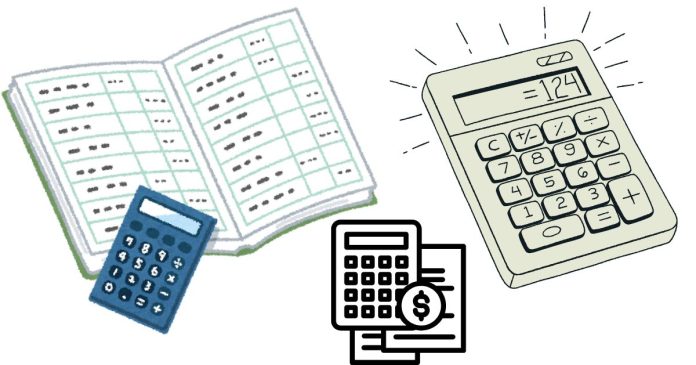The Written Down Value (WDV) method, also known as the Declining Balance Method, is one of the most commonly used methods for calculating depreciation on assets. Under this method, the depreciation expense is calculated as a fixed percentage of the book value (or WDV) of the asset at the beginning of each period. As a result, the depreciation expense decreases over time, since the base value (or asset value) reduces each year.
Here’s how you can calculate depreciation using the Written Down Value (WDV) method:
Steps to Calculate Depreciation Using WDV
- Determine the Initial Cost of the Asset
- The initial cost of the asset is the purchase price plus any associated costs required to bring the asset into working condition (e.g., installation costs, transportation costs).
- Example: If an asset costs $10,000, that is the initial cost.
- Identify the Depreciation Rate
- The depreciation rate is usually a fixed percentage, determined by tax laws, accounting standards, or company policies. For example, it might be 20% per year, depending on the asset and jurisdiction.
- Example: Assume the depreciation rate is 20%.
- Calculate Depreciation for the First Year
- The formula for calculating the depreciation in the first year is:
Depreciation for Year 1=Initial Cost×Depreciation Rate\text{Depreciation for Year 1} = \text{Initial Cost} \times \text{Depreciation Rate}
- Example: If the asset costs $10,000 and the depreciation rate is 20%, then:
Depreciation for Year 1=10,000×0.20=2,000\text{Depreciation for Year 1} = 10,000 \times 0.20 = 2,000After the first year, the book value (WDV) of the asset will be:
WDV at Year 1=10,000−2,000=8,000\text{WDV at Year 1} = 10,000 – 2,000 = 8,000
- The formula for calculating the depreciation in the first year is:
- Calculate Depreciation for Subsequent Years
- For each subsequent year, you calculate depreciation based on the remaining book value (WDV) of the asset at the beginning of the year.
- For example, in the second year, the depreciation will be calculated on the new book value of $8,000:
Depreciation for Year 2=8,000×0.20=1,600\text{Depreciation for Year 2} = 8,000 \times 0.20 = 1,600After the second year, the WDV of the asset will be:
WDV at Year 2=8,000−1,600=6,400\text{WDV at Year 2} = 8,000 – 1,600 = 6,400
- Continue Until the Asset is Fully Depreciated
- The process continues for each year, with the depreciation amount being calculated based on the reduced book value (WDV) from the previous year. The asset will continue to depreciate until its book value reaches its residual or salvage value, which is the estimated value of the asset at the end of its useful life.
- Example: After several years of applying the depreciation rate, the asset’s WDV will continue to decrease until it reaches its salvage value (e.g., $1,000). The depreciation for that final year would be adjusted to reflect the remaining value.
Example of Depreciation Calculation Using WDV
Let’s assume we have the following details:
- Initial Cost of Asset: $10,000
- Depreciation Rate: 20% per year
- Salvage Value: $1,000
Now, let’s calculate depreciation for the first few years using the WDV method.
Year 1:
- Depreciation = $10,000 × 20% = $2,000
- WDV at Year 1 = $10,000 – $2,000 = $8,000
Year 2:
- Depreciation = $8,000 × 20% = $1,600
- WDV at Year 2 = $8,000 – $1,600 = $6,400
Year 3:
- Depreciation = $6,400 × 20% = $1,280
- WDV at Year 3 = $6,400 – $1,280 = $5,120
Year 4:
- Depreciation = $5,120 × 20% = $1,024
- WDV at Year 4 = $5,120 – $1,024 = $4,096
Advantages and Disadvantages of the WDV Method
Advantages:
- Accelerated Depreciation: WDV allows for a larger depreciation expense in the early years, which can reduce taxable income and provide tax benefits for businesses.
- Reflects Asset Usage: The method assumes that assets lose value more quickly in the earlier years, which may align with how some assets actually wear out.
Disadvantages:
- Decreasing Depreciation Expense: Over time, the depreciation expense decreases, which might not accurately reflect the ongoing usage of the asset.
- Complexity: As the value of the asset reduces each year, calculating the depreciation may become slightly more complex compared to methods like straight-line depreciation.
The Written Down Value (WDV) method of calculating depreciation is a commonly used approach where depreciation is calculated as a fixed percentage of the asset’s book value each year. This method allows for accelerated depreciation, meaning the asset depreciates faster in the earlier years. It is especially useful for businesses that need to recover costs more quickly.


